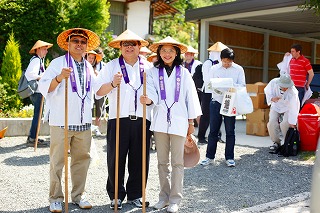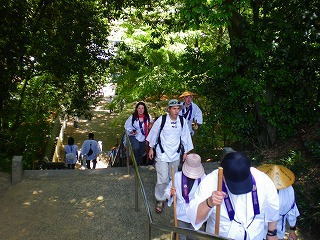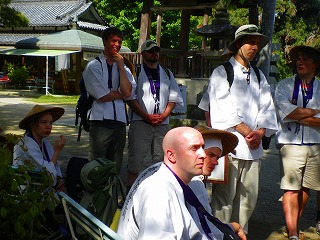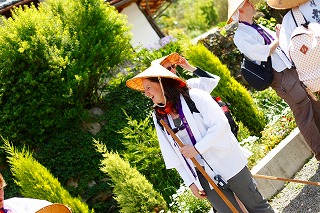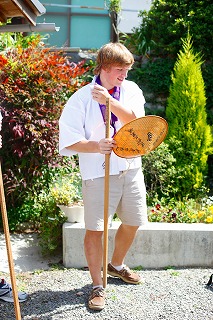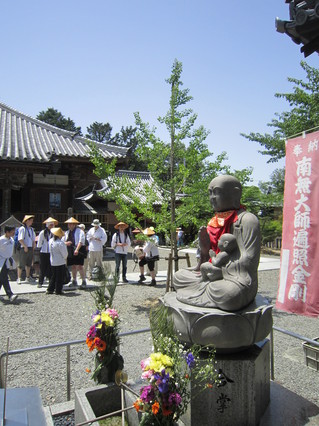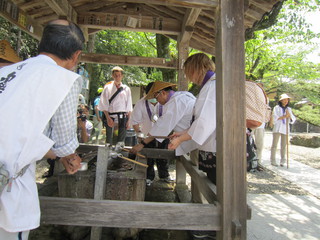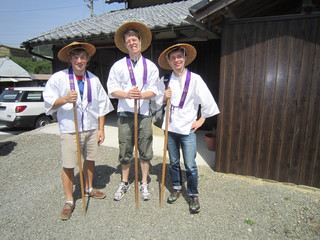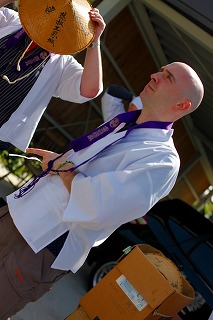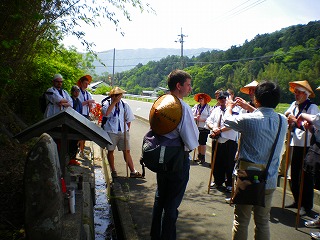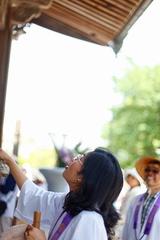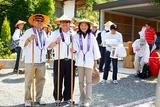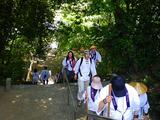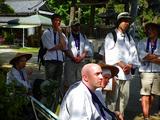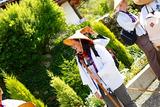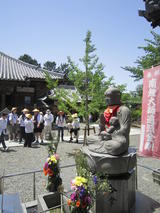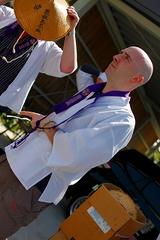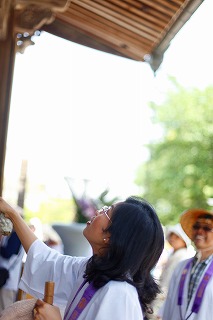
(1) ยกเท้าขวา ก้าวเท้าซ้าย ย้ายไปข้างหน้า
ส่งสายตา ยังที่หมาย ด้วยใจหาญ
อยู่กับกาย อยู่กับใจ มิเว้นวาง
หนึ่งสองสาม ซ้ายขวาซ้าย กายกับใจ
********************************
(2) ถึงวัดแรก มีชื่อว่า ไดโคจิ
จึงตั้งจิต กราบพระพุทธ ที่โบสถ์ใหญ่
จากนั้นไป นมัสการ พระคูไค
ประดิษฐาน อยู่ไม่ไกล ในศาลา
********************************
(3) ท่านเป็นดั่ง องค์ต้นแบบ ของเฮนโระ
ผู้กำเนิด แนวทางนี้ ดีหนักหนา
เดินจาริก แปดสิบแปดวัด วิปัสนา
ด้วยหวังว่า จะบรรลุ ถึงนิพพาน
*******************************
(4) ใจอิ่มบุญ กายอิ่มท้อง พร้อมเดินต่อ
ตามรอยพ่อ ท่านคูไค ใจมิหวั่น
หวังสักวัน ได้เข้าถึง ซึ่งพระธรรม
ใช้กายนำ เร่งฝีเท้า ก้าวต่อไป
********************************
(5) ผ่านแมกไม้ ท้องทุ่งนา อร่ามจิต
ทุกชีวิต ต่างวิถี ดีหนักหนา
เริ่มเข้าเมือง เห็นตึกราม กระจ่างตา
ใกล้เข้ามา ไกลเป็นใกล้ รู้ใจกาย
*********************************
(6) ถึงจุดหมาย วัดสุดท้าย ด้วยใจหวัง
เคาะระฆัง ดังสนั่น ไม่หวั่นไหว
กราบพระพุทธ ไหว้พระธาตุ ออกจากใจ
รู้กายใจ เป็นหนทาง เข้าสู่ธรรม
******************************
(7) ลงก้มกราบ ซาบซึ้งใจ ในตถาคต
แม้ประสบ ความทุกข์ยาก ลำบากหนา
ยังโชคดี ในชาตินี้ ได้เกิดมา
ภายใต้ร่ม ศาสนา พระโคตมี
*******************************
(8) จึงตั้งจิต คิดอธิษฐาน ขอพรพระ
ขออำนาจ สิ่งศักดิ์สิทธิ์ ทั่วทุกสถาน
แม้ต้องเกิด แล้วต้องตาย วายชีวาร
ขอพบพาน พุทธศาสนา ทุกชาติไป
*******************************
